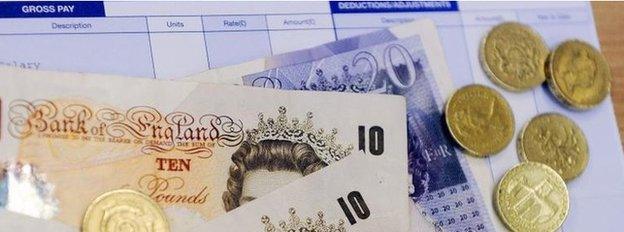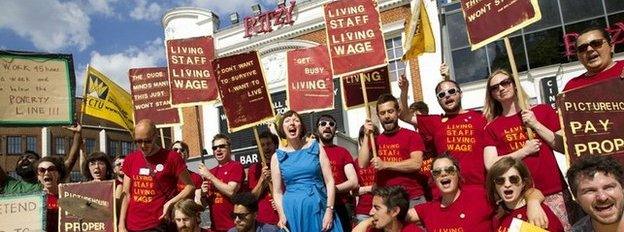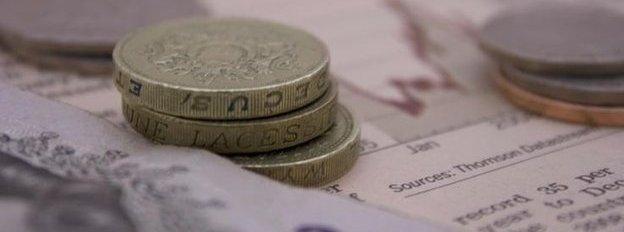The new National Living Wage and you
- Published

Shop workers will be amongst those to benefit from the National Living Wage
One of George Osborne's big ideas - the National Living Wage (NLW) - comes into effect on 1 April 2016.
It is likely to be popular with 1.3m workers over 25 who will benefit immediately , but several big employers have said it will hit their profits badly. The Office for Budget Responsibility (OBR) has also warned that 60,000 jobs will be lost as a direct result.
Not to be confused with either the National Minimum Wage - or the Living Wage - the NLW should boost the incomes of many of the UK's most poorly-paid employees.
So how will the National Living Wage work, and what does it mean for you?

What is the new National Living Wage?

It will be paid to workers aged 25 and above. Initially, it will be set at £7.20 an hour, with a target of it reaching more than £9 an hour by 2020. Part-time and full-time workers will get it.
It will give a pay rise to 1.3m workers this year, according to the OBR. But it is expected to cost 60,000 jobs and reduce hours worked by four million a week.
Some employers - particularly those in London- have promised to pay even more than the NLW.

How is this different to the National Minimum Wage?

The technical answer is that the minimum wage will remain in place, and the compulsory living wage will be a top-up for workers aged 25 and over.
The fact that it is compulsory has led some to say that this is simply a rebranded minimum wage.
The National Minimum Wage rates are upgraded in October each year. These are the current rates:

Isn't there a living wage already?

Yes, this is an informal benchmark, not a legally enforceable minimum level of pay, which is promoted by the Living Wage Foundation, external. It existed before the NLW was announced.
It is calculated by academics as the level of pay that would give workers sufficient for a basic standard of living.
At the moment, that amount is £8.25 an hour, and £9.40 an hour in London.
Some companies agree to pay at least this amount. They include some FTSE 100 companies such as SSE, Aviva, Barclays, Pearson, and Legal & General. Some big local authorities also pay the living wage.

How is the new National Living Wage set?
The April 2016 figure has been set at £7.20 an hour.
The government will ask the Low Pay Commission, which currently recommends the level of the minimum wage, to suggest a figure for the National Living Wage in April 2017.
Mr Osborne said that there was an ambition that the National Living Wage should continue to increase to reach 60% of median earnings by 2020, subject to sustained economic growth.
It is that calculation that leads to the aim for the National Living Wage to be more than £9 by 2020.

What has the Living Wage Foundation said about the new system?

It said it was delighted with the chancellor's announcement, but raised some concerns as well.
For example, it highlighted that their suggestion for the lowest level of pay in London was higher now (at £9.40 an hour) than the National Living Wage will be in 2020.
It also urged companies to pay the under 25s a living wage.

What do companies make of it?
The wage hike is a "gamble" that risks putting politics into a system of setting a minimum wage, says the CBI business lobby group.
It may also cause problems for some small businesses, it says.
Fashion chains, supermarkets and the hospitality sector are expecting to have to raise wages. The British Retail Consortium, which represents shops, has claimed that as many as 900,000 jobs could be lost in the sector, as a result of both the NLW and the Apprenticeship levy.
The former boss of Sainsbury's, Justin King, said that the NLW would "destroy jobs".

What penalties will employers face if they don't pay the NLW?
From 1 April, penalties for non-payment of the NLW will be doubled, from 100% of the money owed, to 200%. Employers found guilty can be disqualified as a company director for up to 15 years.
The maximum penalty will remain at £20,000 per worker.
A new enforcement team has also been set up at HM Revenue and Customs (HMRC) to pursue criminal prosecutions.